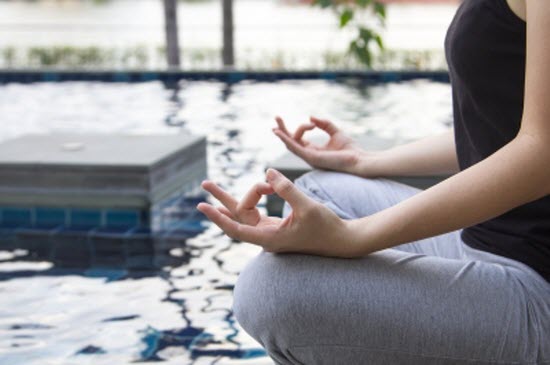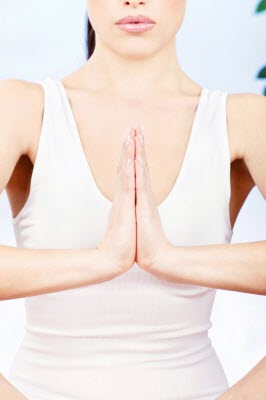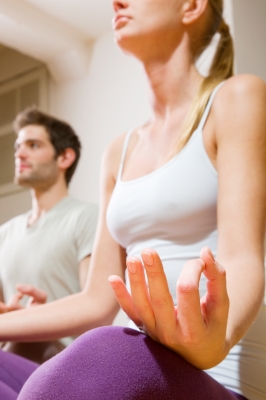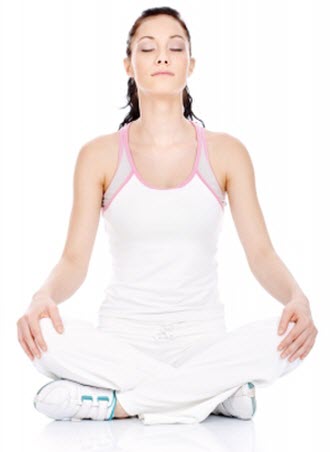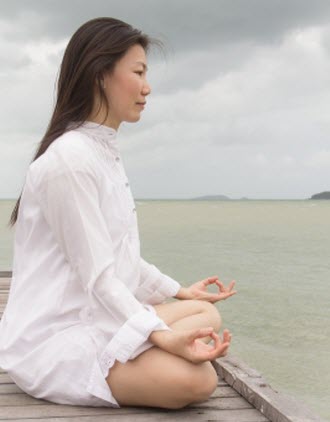Types of Meditation Techniques
Meditation was envisaged as a spiritual matter for a long time. But now it is acknowledged as a therapy. It is capable of influencing all dimension of human physiology. Scientific studies have shown that practicing meditation regularly has significant effect on human physiology.
(Src)
So what is meditation? There is no specific meditation definition. But in short, it is a technique of resting the mind and body, while controlling the breathing process.
Meditation brings consciousness towards the body, mind, and soul. It allows you to detach yourself from stressful thoughts and give space to relax. The positive effect of meditation is endless. People who depend on sedative drugs, alcohol, and marijuana to relieve stress. By practicing meditation, it not only help them to reduce stress but also overcome drug addiction.
Meditation is practiced based on three techniques.
1. Focused attention or concentration techniques
2. Open monitoring techniques (monitoring ongoing experience)
3. Automatic self-transcending techniques (holding attention on one object)
Meditation techniques for beginners are based on the same techniques. But they are recommended light meditation before they jump into core meditation or yoga meditation.
Different meditation types
There are many different types of meditation. They help you develop inner calmness and peace. Let see how to meditate.
- Vipassana or Mindfulness meditation
Vipassana originated from the Buddhist culture. It is also referred as Mindfulness meditation. This meditation is a practice of “open monitoring.”
The mindfulness exercise is a combination of both monitoring your breathing pattern, and detaching yourself from the unnecessary thoughts. As the meditation advances, the thought frequency will reduce, and you will achieve a peaceful mind.
(Src)
To practice this meditation, you have to close your eyes, sit still and do the breathing. The breathing process should be slow, intense and deep. While practicing this meditation you have to monitor the breathing process. Doing so an array of thoughts will pass through your mind. You have to witness these thoughts and let go pass. During this practice, the practitioner will go into deeper and deeper states of meditation.
The advantage of this mediation is unlimited. But studies shows that it improves brain and immune function.
- Transcending meditation (TM) or Mantra meditation
(Src)
The transcending meditation technique is also referred as “Mantra Meditation.” Unlike mindfulness meditation, where you monitor breathing, this involves chanting of mantras (Rhyming Words).
In transcending meditation, you concentrate on the mantras. Repeating this mantra creates the periodic waves of vibration in one’s consciousness. This helps to lift individual to the state of relaxation. Usually, the practice lasts for 15-20 minutes. Regularly practicing this meditation brings the meditator into deeper and deeper levels of meditation.
Studies have suggested that Transcending meditation improves Autonomic nervous system interaction. The autonomic nervous system regulates various body functions like heart rate, reflex actions, blood pressure, etc.
- Zen Meditation or Controlled Focus
(Src)
Zen Meditation is a spiritual exercise held in Zen sect of Buddhism. For the Zen meditation, you have to sit placing your left palm on top of the right. Then concentrate on breathing pattern while eyes closed. You can practice Zen meditation for hour or so.
Some practice Zen meditation using a Buddhist scripture. This type of meditation is designed for monastic settings. Since one needs to be familiar with Buddhist scripture in order to practice this.
- Kundalini Meditation
(Src)
The Kundalini yoga is about awakening your dormant energy by meditation. It is also known as a kundalini awakening. It activates seven energy points that exist in your body. This energy point includes pinnacle of head, forehead, neck, chest, stomach, pelvic region, and genitals. By concentrating on this energy point, a stream of energy gets activated. Scientific studies suggest that it is helpful in the treatment of the obsessive compulsive disorder and other psychiatric disorder. This meditation technique requires a trainer and proper guidance.
- Qigong Meditation
(Src)
This is a Chinese method of meditation. The intention is to circulate energy through the organs and energy centers of the body in an oval pattern. In this meditation, practitioners concentrate on three major energy points:
- Point below the navel
- Perineum
- Center of the head
You have to visualize energy flow from your navel to perineum and from perineum towards the head. You need to inhale, during energy flow from navel to the perineum and from perineum towards the head. While you will exhale when energy flows back from head to navel and then perineum.
To practice, Qigong avoid eating before half hour of practice. Your posture is important in Qigong meditation. Keep your legs folded and sit in lotus position. Then start breathing from the diaphragm. To do this push the abdomen in and out instead of expanding and compressing the chest. Scientific studies show that Qigong therapy can reduce the cancer-related problem.
Besides these major techniques, there are other meditation techniques like Guided visualization, trance based practice, and heart rhythm meditation.
Different effects of meditation on the human body
There is no clear evidence that by practicing a particular type of meditation you can achieve the desired result. But some research suggests that meditation would be beneficial in particular conditions, such as:
- Transcending Meditation
Lowering blood pressure, alleviating chronic anxiety and reducing stress hormones
- Mindfulness Meditation
Pain management, healing process, and reducing negative thoughts
While other medical benefits associated with Meditation are
- Lower blood pressure
- Improved blood circulation
- Lower heart rate
- Less perspiration
- Controlled respiratory rate
- Less anxiety and low level of blood cholesterol
No one technique of meditation is superior to another technique. They all bear a positive effect. However, for few individuals, it takes more practice to gain positive effect.
While practicing meditation some might face complication like drowsiness, sleepiness, or mood swings.

